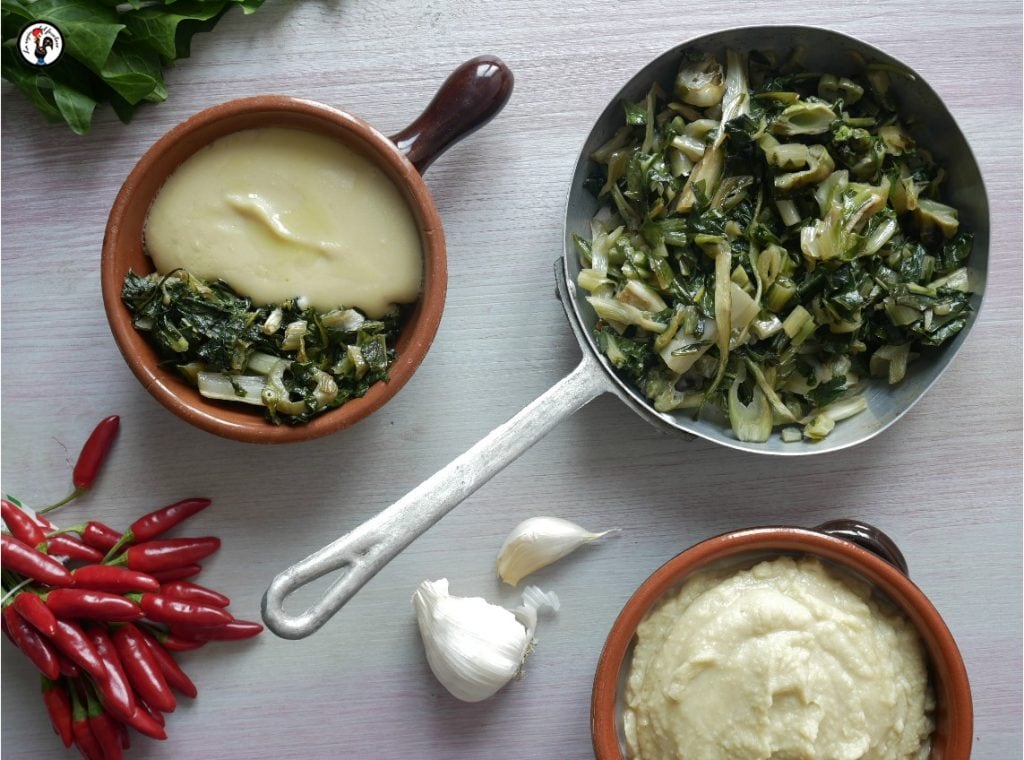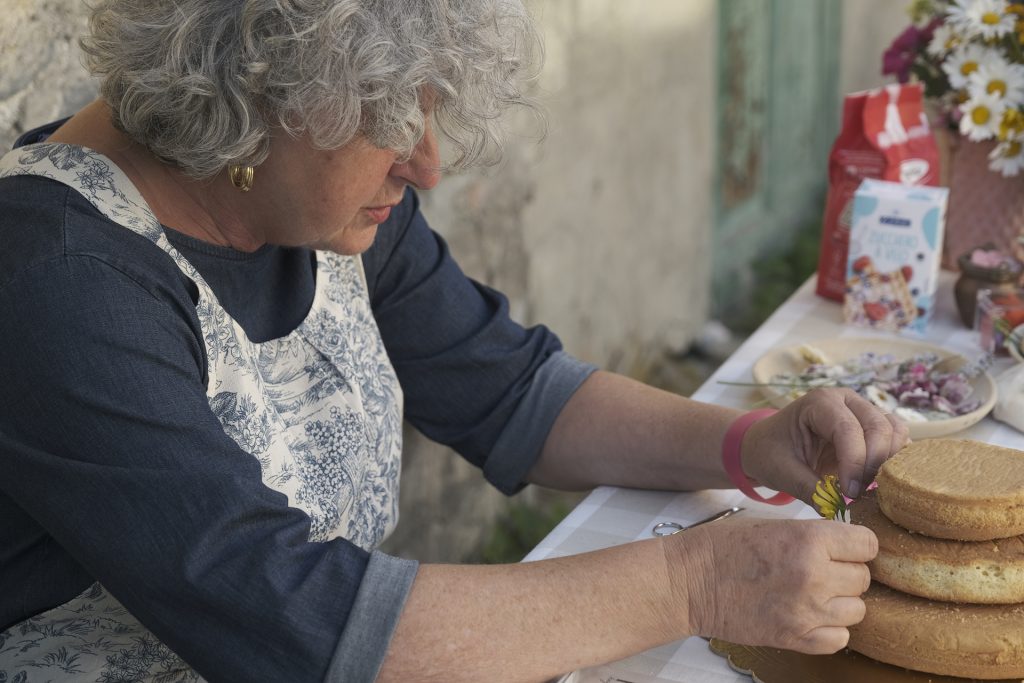One of the best things in the world, fava bean and chicory purée. It’s an Apulian recipe, and it’s in Apulia that I learned how to make it. I’ve never stopped since. I’ve tasted and made it in many ways. Drier or more liquid, like a soup, or with slices of toasted bread rubbed with garlic. In every way, it’s always good. Like all simple dishes, fava bean purée goes a long way, really satisfies, and moreover, if there’s any left, diluted with cooking water, black pepper, and pecorino it’s an excellent pasta sauce.
In short: don’t miss out on fava bean and chicory purée, try it right away. This is my version.

- Difficulty: Very Easy
- Cost: Very Cheap
- Preparation time: 15 Minutes
- Portions: 4
- Cooking methods: Stovetop
- Cuisine: Italian Regional
- Region: Apulia
- Seasonality: Fall, Fall, Winter
- Energy 389.69 (Kcal)
- Carbohydrates 45.94 (g) of which sugars 4.59 (g)
- Proteins 17.77 (g)
- Fat 16.11 (g) of which saturated 2.47 (g)of which unsaturated 1.35 (g)
- Fibers 19.31 (g)
- Sodium 1,081.93 (mg)
Indicative values for a portion of 11 g processed in an automated way starting from the nutritional information available on the CREA* and FoodData Central** databases. It is not food and / or nutritional advice.
* CREATES Food and Nutrition Research Center: https://www.crea.gov.it/alimenti-e-nutrizione https://www.alimentinutrizione.it ** U.S. Department of Agriculture, Agricultural Research Service. FoodData Central, 2019. https://fdc.nal.usda.gov
Ingredients for fava bean and chicory purée
- 9 oz dried fava beans (peeled)
- 2.2 lbs catalogna chicory
- 4 tbsp extra virgin olive oil
- 2 cloves garlic
- 1 dried chili pepper
- 0.35 oz salt
- 1 leaf bay
How to prepare fava bean and chicory purée
This dish has no season. In spring, it’s made with fresh fava beans and small chicory or wild dandelion greens. In winter, however, with dried fava beans and long-leaf catalogna, also known as Apulian chicory.
Peeled dried fava beans are very handy because they don’t need to be soaked and cook quickly. Put them in a pot with cold water and a bay leaf, without salt. I cook them in a pressure cooker: it takes about twenty minutes from the start of the whistle.
Once cooked, while the water is still hot, we add the salt and wait for it to dissolve before draining the fava beans. However, I recommend saving the cooking water.
Blend the fava beans with an immersion blender until you get a purée of the right consistency; if needed, we can use a little of the cooking water we set aside. Adjust the salt and set aside.Catalogna is a rustic and bitter herb, which we will cook in a pan with garlic and spicy chili pepper.
Wash the vegetable thoroughly and cut it thinly with a sharp knife, then sauté it in a pan with whole crushed garlic and chili pepper. We need to make it soft without overcooking, and it should be well-seasoned and quite spicy. The taste of garlic should also be noticeable, but I always remove it before serving to avoid surprises.
We’re ready to serve the warm fava bean purée (sweet, soft, enveloping!) together with the crunchy, bitter, and perfectly spicy chicory. Two perfect travel companions.

Special Thanks
Thanks to Apulia, because it is infinitely beautiful, and to the Apulians for inventing this delicious regional dish. Dear Apulians, I apologize if I wasn’t precise: in the comments, you can correct anything you want, and I will be grateful.
Pair this dish with good rustic bread. In Matera, I ate a delicious fava bean and chicory soup: to get it, just dilute the purée with its cooking water and add the vegetable. With garlic croutons and pecorino, it will be out of this world.
Again: pasta with fava bean purée is really excellent. Don’t miss it.
Throughout Italy, traditional cuisine recipes are dishes with few, often simple ingredients. And throughout Italy, they are delicious. As a Genoese, I particularly cherish the Ligurian tradition: if you feel like tasting, try the chickpea and chard zimino, the nut sauce or the Genoese pesto.
If you want to read all my Genoese recipes, and much more, RETURN TO THE HOME. Follow me also on Facebook and on Instagram and you’ll find lots of ideas and advice. Leave a comment, below you’ll find the space to do so. I’ll be happy to read it.
What is Silvia Tavella’s other blog called? And why does she write two?
I write two blogs because they are two completely different things and because one complements the other. This is a recipe book: I love recipes that remain my passion and that are a source of inspiration for me.
It’s precisely because of them that I started writing short stories and dealing with food culture, since our identity is closely tied to the territory where we were born and live and to the acts of care that cooking brings to the table. In my new blog, you’ll find all this without annoying ads, it’s still called La Regina del Focolare and you can find it here:
https://www.lareginadelfocolare.it
How to season spaghetti with fava bean purée
You will often have leftovers because fava bean purée solidifies as it cools. Toss the spaghetti, dilute the fava beans with cooking water, good olive oil, and a grind of pepper. Drain the spaghetti with a fork, add it to the fava beans, mix, and finish with grated pecorino cheese.

